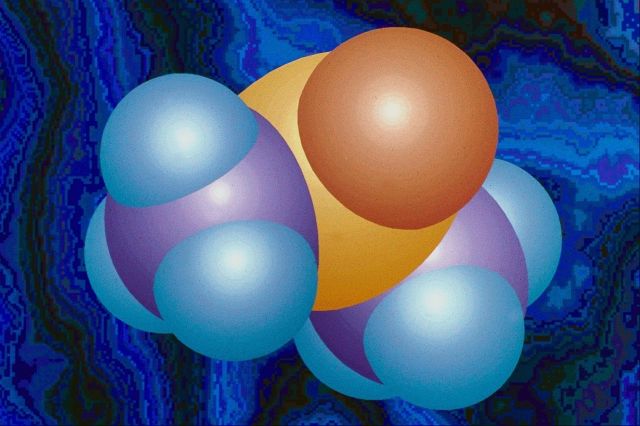
Background
Biochemistry is the chemistry (the study of the composition and changes) of living things. Everything in the universe consists of matter. Matter cannot be destroyed; it merely changes states. The purest type of matter is the element. An element is the simplest form of a substance. The most common elements in living things are oxygen (O), carbon (C), hydrogen (H), and nitrogen (N). Elements are arranged in the periodic table by their own chemical symbol. For example, the chemical symbol for carbon is C and the symbol for neon is Ne. Each element can be broken into simpler particles called atoms. The atom's center is the nucleus. The nucleus is made up of protons and neutrons. Protons are positively charged and neutrons have no electric charge. The number of protons gives the element's atomic number. For example, carbon's atomic number is six because it has six protons. The number of protons equals the number of electrons, which are negatively charged particles. Since the protons equal the number of electrons, the atom's overall electrical charge is zero. The electrons orbit outside of the nucleus in different energy levels, which are also called valence shells. Electrons in the outer levels have more energy than those in inner levels. The energy levels can only hold certain numbers of electrons. The first level holds up to two while the second level can hold up to eight. Most elements have unfilled outer levels. Elements tend to combine with other elements in order to stabilize themselves. A compound is a pure substance made of the atoms of two or more elements. A chemical formula shows how certain elements combine with one another.For example, water (H2O) always forms with two hydrogen and one oxygen. The compound as a whole acts differently than the elements that make it. The atom's number of electrons shows how likely it is to react with others. Atoms with filled energy levels, such as helium and neon, tend not to combine with other elements because they are chemically stable. Elements that don't have filled energy levels will undergo chemical reactions to become stable. In a reaction, elements will combine with other elements in order to stablize themselves. When a chemical reaction occurs, chemical bonds are broken, the atoms are rearranged, and new bonds are formed.
Other Sections
Chemical Bonds
Energy and Matter
Chemical Reactions
Solutions
Acids and Bases
Polarity
Functional Groups
Carbon Molecules
Carbohydrates
Proteins
Lipids
Nucleic Acids


